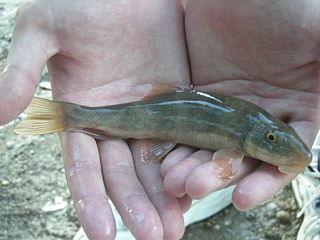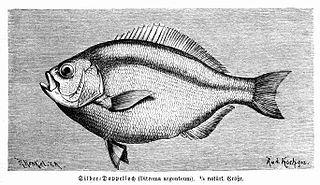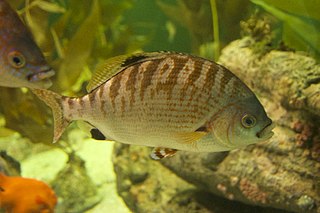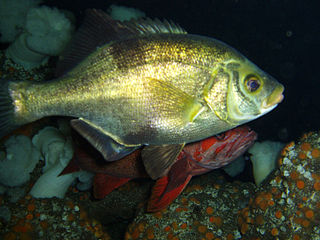
Spiny lizards is a common name for the genus Sceloporus in the family Phrynosomatidae. The genus is endemic to North America, with various species ranging from New York, to Washington, and one occurring as far south as northern Panama. The greatest diversity is found in Mexico. This genus includes some of the most commonly seen lizards in the United States. Other common names for lizards in this genus include fence lizards, scaly lizards, bunchgrass lizards, and swifts.

Pseudomonas is a genus of Gram-negative bacteria belonging to the family Pseudomonadaceae in the class Gammaproteobacteria. The 313 members of the genus demonstrate a great deal of metabolic diversity and consequently are able to colonize a wide range of niches. Their ease of culture in vitro and availability of an increasing number of Pseudomonas strain genome sequences has made the genus an excellent focus for scientific research; the best studied species include P. aeruginosa in its role as an opportunistic human pathogen, the plant pathogen P. syringae, the soil bacterium P. putida, and the plant growth-promoting P. fluorescens, P. lini, P. migulae, and P. graminis.

Gila is a genus of fish belonging to the family Cyprinidae, native to the United States and Mexico. Species of Gila are collectively referred to as western chubs. The chiselmouth is a close relative, as are members of the genus Siphateles. Several members of the genus are endangered or extinct due to loss of habitat caused by diversion or overuse of water resources, particularly in the western United States.

Catostomus is a genus of fish belonging to the family Catostomidae, commonly known as suckers. This genus of fish usually lives in freshwater basins. Most members of the genus are native to North America, but C. catostomus is also found in Russia.

The tule perch is a surfperch (Embiotocidae) native to the rivers and estuaries of central California. It is the sole member of its genus, and the only freshwater surfperch.

Cyprinella is a genus of fish in the family Cyprinidae, the carps and minnows. They are known as the satinfin shiners. They are native to North America, and some are among the most common freshwater fish species on the eastern side of the continent. Conversely, several Cyprinella species with small distributions are threatened and the Maravillas Creek subspecies of the red shiner is extinct.

Actinemys is a small genus of turtles in the family Emydidae. The genus is endemic to the west coast of North America. The genus contains two species.

The barred surfperch is a species of surfperch native to inshore waters from northern California, United States to southern Baja California, Mexico. This species can reach a length of 43 centimetres (17 in) TL though most do not exceed 30 centimetres (12 in) TL. The maximum recorded weight is 2.0 kilograms (4.4 lb). Like other surfperches, it gives birth to live young. The diet of the barred surfperch consists predominantly of sand crabs.
Hyperprosopon ellipticum, the silver surfperch, is a species of surfperch native to the eastern Pacific Ocean. This species is also displayed in public aquariums.

The redtail surfperch is a marine fish that inhabits the near-shore and estuarine waters of North American Pacific coasts.

Amphistichus is a genus of surfperches native to the eastern Pacific Ocean.

Embiotoca is a genus of surfperches native to the eastern Pacific Ocean.

Hyperprosopon is a genus of surfperches native to the eastern Pacific Ocean.

The rainbow surfperch, also known as rainbow seaperch, or bugara, is a species of surfperch found along the Pacific coast of North America from Cape Mendocino, California to northern Baja California, Mexico. This species prefers rocky shores over sandy ones, and is never found in the surf, preferring the edges of kelp forests down to depths of about 40 metres (130 ft). This species grows to a length of 30 centimetres (12 in) TL. This species is the only known member of its genus. The specific name honours Thomas Cary (1824-1888), a business man and amateur naturalist who was also the brother-in-law of Louis Agassiz who procured specimens that confirmed that this species was viviparous.

Neoditrema ransonnetii is a species of surfperch native to the Pacific coasts of Korea and Japan. This species grows to a length of 13 centimetres (5.1 in) FL. This species is the only known member of its genus. The specific name honours the Austrian diplomat, painter, lithographer, biologist and explorer Eugen von Ransonnet-Villez (1838–1926), who obtained the type specimens in Japan.

Rhacochilus is a genus of surfperches native to the eastern Pacific Ocean.
The pink surfperch, or pink seaperch, is a species of surfperch native to the eastern Pacific Ocean from Point Delgada, California, United States to southern Baja California. It is also present in the Gulf of California. This species is an offshore member of the surfperch family, and occurs at depths of from 8 to 229 metres. The Pink surfperch grows to a length of 20 centimetres (7.9 in) TL. It is the only known member of its genus.

Embiotoca jacksoni, commonly known as the black surfperch, is a species of surfperches native to shallow coastal areas of the eastern Pacific. Other common names of the species include black perch and butterlips. They are usually a dark reddish brown to tan in color, often also with vertical dark bars across their body. They are commercially important food and game fish.
Sea perch, sea-perch or seaperch are the common names of various fishes, including:















